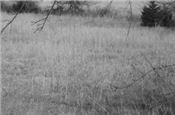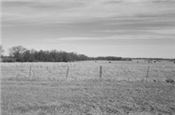Are Your Fields Being Overtaken By Brown Grass?


ELDON COLE
MT. VERNON, MO.
Every year about this time it seems more broom sedge shows up in pastures and hay fields in southwest Missouri. It’s pretty easy to spot due to it’s tan to brown color and it’s still standing tall as cattle don’t eat it unless they’re very hungry. Most palatable forages have been eaten by now. If the broom sedge is short, due to being grazed, you’ll probably find the cattle in that pasture are body condition score 4’s or below.
Broom sedge, often referred to as sage grass, invades pastures due to low soil fertility levels. For years , acid soils or those needing lime were blamed but low phosphorus can be a factor also.
Broom sedge, often referred to as sage grass, invades pastures due to low soil fertility levels. For years, acid soils or those needing lime were blamed but low phosphorus can be a factor also. Of course, a weakened stand of desirable forage enables the broom sedge to creep in overtime.
Check your “brown grass” fields with a soil test to determine what exactly is missing and the amount of lime and fertilizer needed to keep them from getting browner in the future.
Broom sedge is technically a warm season grass just not the good kind like bermuda, crab grass and several native warm season grasses. The protein levels are in the 5 percent range for broom sedge while total digestible nutrient (TDN) values likely are off the chart in the 40 percent range.
The reason some fields may have “browned” up this year may be traced to hay purchases made one year ago. At this time last year, farmers were baling everything they could find that might be used for hay. Several calls to my office wanted to know what kind of hay made a real fuzzy bale. Well the main one I could think of was broom sedge that had gone to seed.
Any way you look at broom sedge, it’s taking up space in your fields and costing you money and your cattle’s performance. ∆
ELDON COLE: Extension Livestock Specialist, University of Missouri